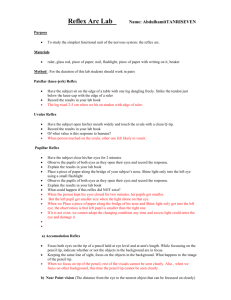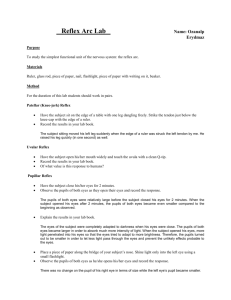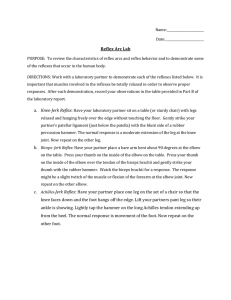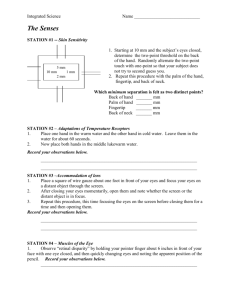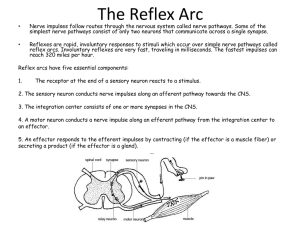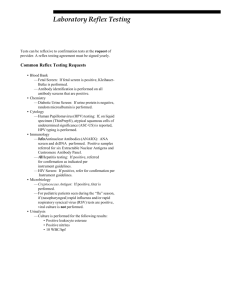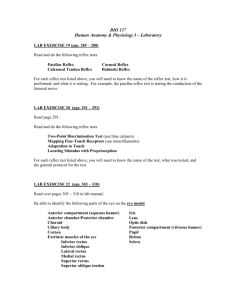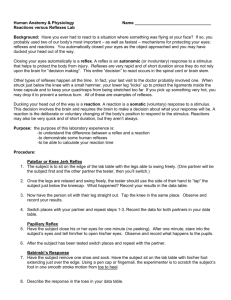Reflex Arc Lab Name
advertisement
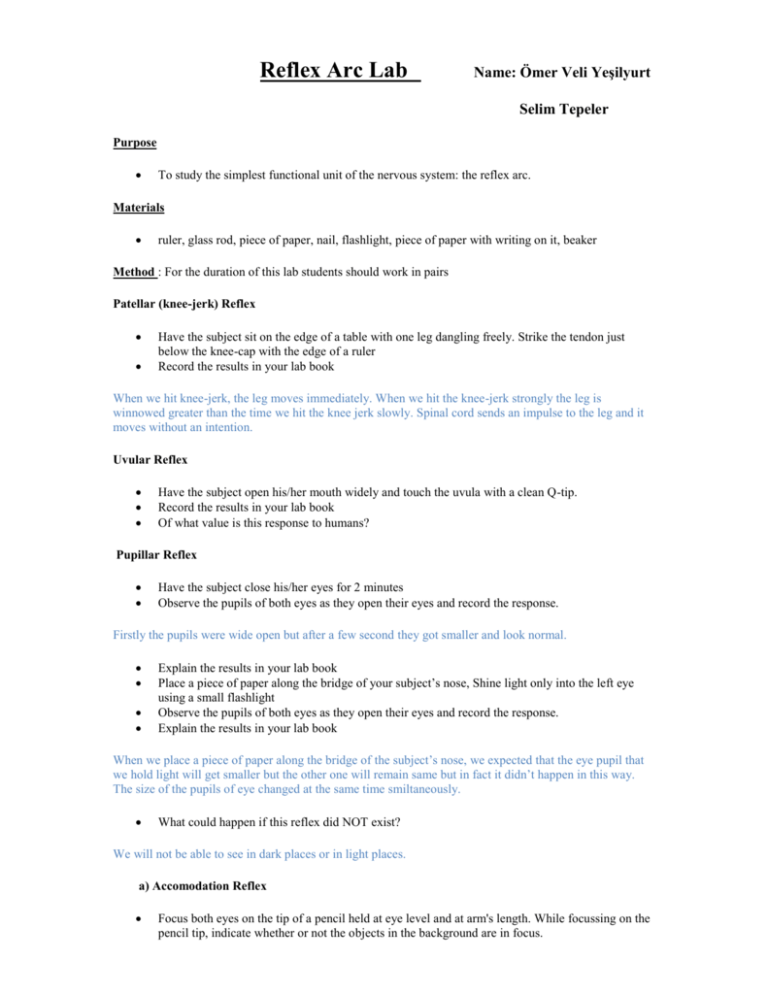
Reflex Arc Lab Name: Ömer Veli Yeşilyurt Selim Tepeler Purpose To study the simplest functional unit of the nervous system: the reflex arc. Materials ruler, glass rod, piece of paper, nail, flashlight, piece of paper with writing on it, beaker Method : For the duration of this lab students should work in pairs Patellar (knee-jerk) Reflex Have the subject sit on the edge of a table with one leg dangling freely. Strike the tendon just below the knee-cap with the edge of a ruler Record the results in your lab book When we hit knee-jerk, the leg moves immediately. When we hit the knee-jerk strongly the leg is winnowed greater than the time we hit the knee jerk slowly. Spinal cord sends an impulse to the leg and it moves without an intention. Uvular Reflex Have the subject open his/her mouth widely and touch the uvula with a clean Q-tip. Record the results in your lab book Of what value is this response to humans? Pupillar Reflex Have the subject close his/her eyes for 2 minutes Observe the pupils of both eyes as they open their eyes and record the response. Firstly the pupils were wide open but after a few second they got smaller and look normal. Explain the results in your lab book Place a piece of paper along the bridge of your subject’s nose, Shine light only into the left eye using a small flashlight Observe the pupils of both eyes as they open their eyes and record the response. Explain the results in your lab book When we place a piece of paper along the bridge of the subject’s nose, we expected that the eye pupil that we hold light will get smaller but the other one will remain same but in fact it didn’t happen in this way. The size of the pupils of eye changed at the same time smiltaneously. What could happen if this reflex did NOT exist? We will not be able to see in dark places or in light places. a) Accomodation Reflex Focus both eyes on the tip of a pencil held at eye level and at arm's length. While focussing on the pencil tip, indicate whether or not the objects in the background are in focus. The objects in background are not in focus so the look more like blur. Keeping the same line of sight, focus on the objects in the background. What happens to the image of the pencil tip. İmage of the pencil becomes almost invisible looks blurry. b) Near Point vision (The distance from the eye to the nearest object that can be focussed on clearly) Cover one eye, and focus on a piece of paper with writing on it. Gradually bring the paper closer and closer to your eye until the letters just go out of focus. Have your partner measure the distance (in cm) between the paper and your eye in your lab book 5,6,7 cm Repeat these last two steps with the other eye. Record the near point for both eyes. 6 cm Give a physiological explanation for what has occurred in both parts of this experiment. Why can a person not see objects clearly when they are positioned closer to the eye than the near point? Because it’s more likely that the image falls onto the yellow point. And also The vision falls onto the yellow point at that distance so the image cannot be seen. And also the muscles that change the shape of the lens cannot make it fatter. What happens to the near point as a person ages? Why does this occur? When a person gets older their muscles becomes weaker so it becomes more difficult to see close.
